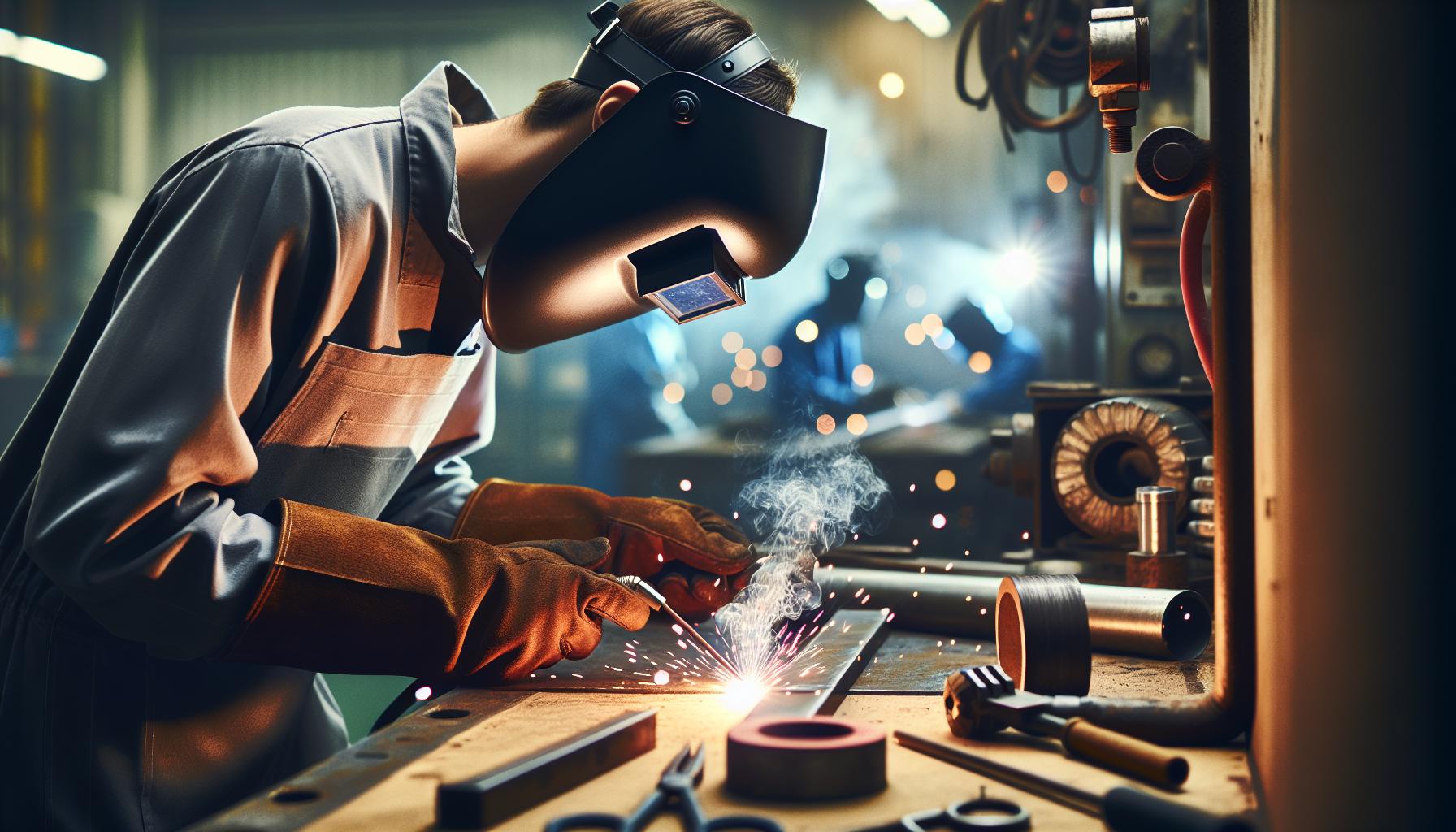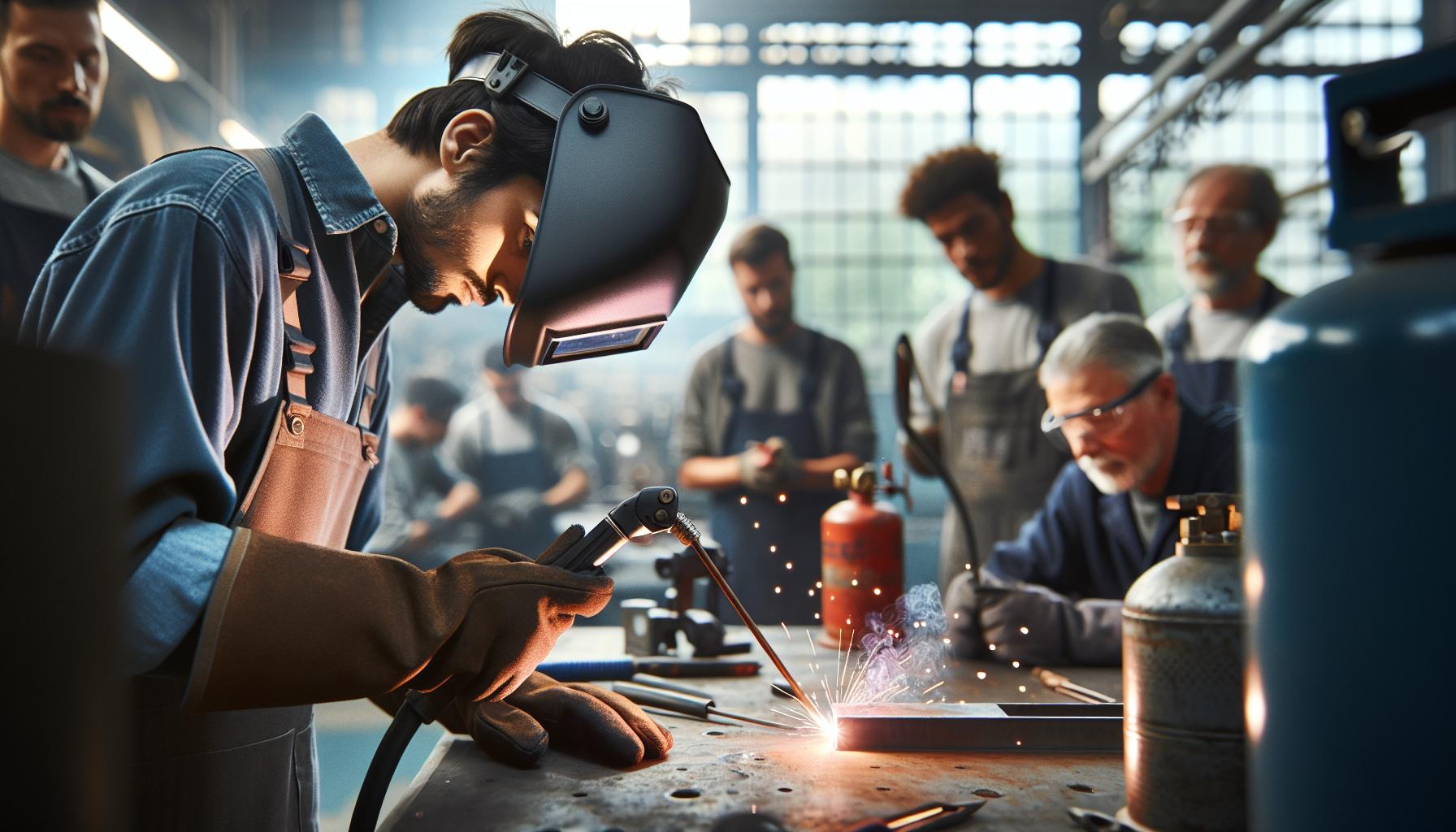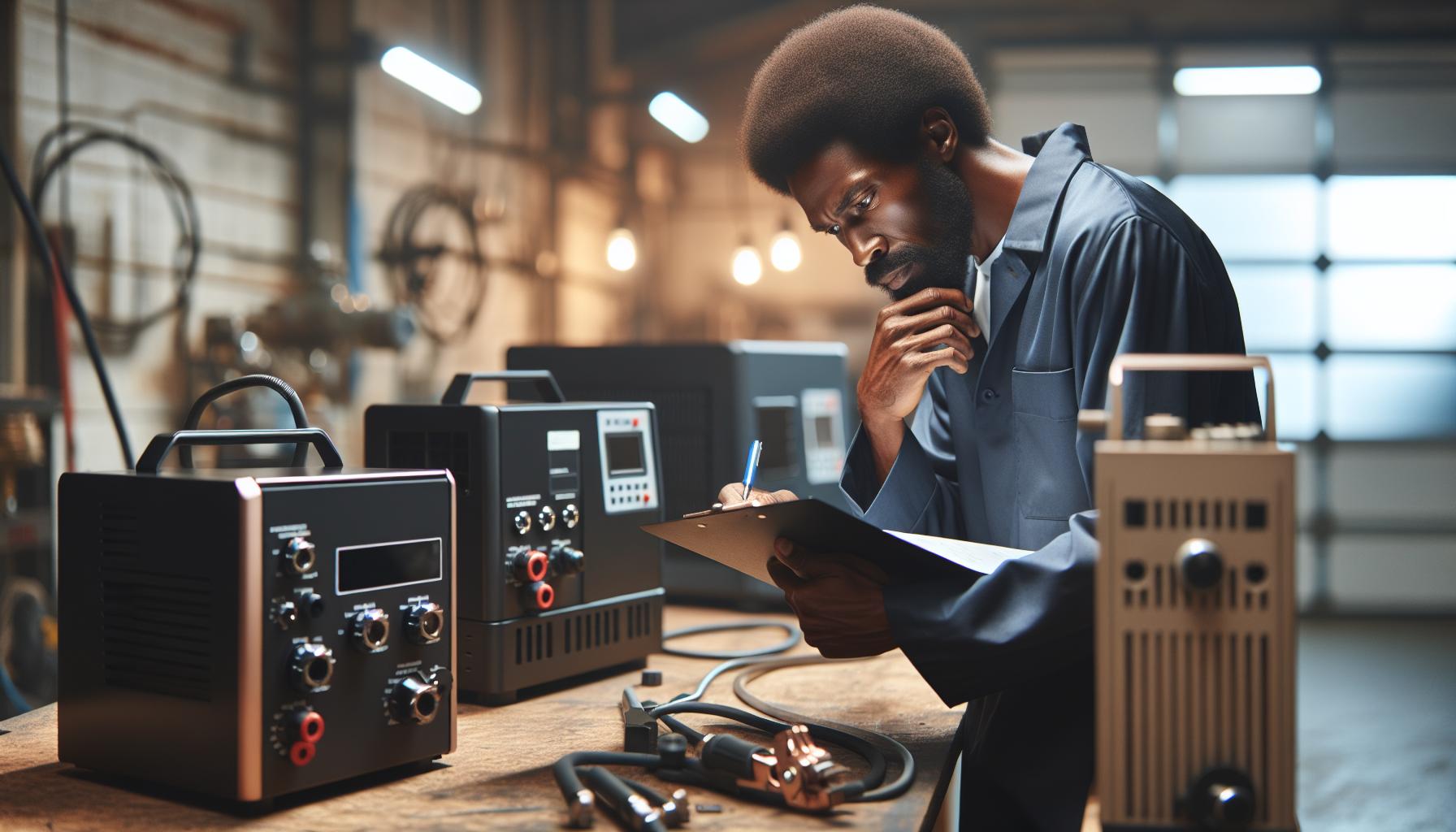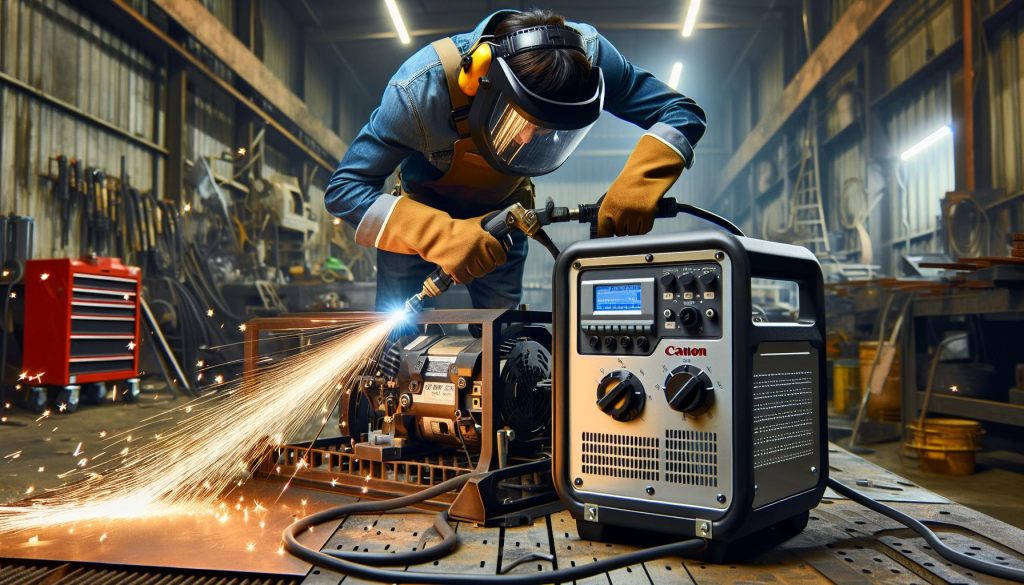When it comes to powering your equipment for welding projects, the question “Can you run a plasma cutter off a generator?” is crucial for DIY enthusiasts and professionals alike. Understanding the compatibility between your plasma cutter and generator can significantly impact your efficiency and success, especially in remote locations. Many welders face the challenge of limited access to traditional power sources, making portable power solutions a necessity. This article will explore the requirements for running a plasma cutter on a generator, addressing safety concerns, power needs, and optimal setups. By the end, you’ll gain valuable insights into whether your generator can effectively fuel your plasma cutting tasks, helping you make informed decisions about your equipment and projects.
Can a Generator Power a Plasma Cutter?
Powering a plasma cutter with a generator is a practical solution for welders who require mobility or work in remote locations. The ability to cut through metal using a plasma cutter relies heavily on the machine’s power requirements, which can often exceed what a standard generator can supply. Many plasma cutters require a significant amount of starting and running power, typically measured in watts, which can vary based on the model and thickness of the metal being cut.
To effectively run a plasma cutter on a generator, it’s crucial to first understand the power requirements of your specific model. Most plasma cutters will list their amperage and wattage requirements in the specifications. Generally, a generator should provide at least 20-30% more power than the rated wattage of the plasma cutter to accommodate for surge power-the additional power needed to start the machine. For example, if your plasma cutter needs 5,000 watts, a generator offering at least 6,500 watts is advisable. This extra capacity helps to avoid overloading the generator and ensures stable operation.
Generator Type Considerations
When selecting a generator for your plasma cutter, consider factors such as fuel type, portability, and power output. Inverter generators are often preferred for delicate electronics due to their clean energy output. They can handle the precise voltage needed for proper plasma cutting, minimizing the risk of damaging the equipment. Meanwhile, conventional generators might offer higher wattage output, making them more suitable for industrial-grade plasma cutters.
Common Challenges and Solutions
Using a plasma cutter with a generator may come with challenges, such as inconsistent power supply and potential interruptions during operation. To mitigate these issues, always ensure the generator is maintained regularly and equipped with the necessary load management capabilities. Additionally, utilizing appropriate extension cords with the correct gauge can further stabilize the electrical flow from the generator to the plasma cutter.
In summary, while a generator can indeed power a plasma cutter, careful attention to power needs, generator specifications, and maintenance practices is essential. Following these guidelines not only enhances the efficiency of your cutting operations but also extends the life of both the plasma cutter and generator.
Understanding Power Requirements for Plasma Cutters
Powering a plasma cutter requires a thoughtful assessment of your equipment’s energy needs, as plasma cutting can demand significant electrical resources. Understanding the power requirements is crucial to ensure efficient operation, prevent equipment damage, and maintain workplace safety. Plasma cutters are rated in terms of amperage and wattage, which directly correlate to the thickness of the material to be cut and the cutting speed. For instance, thicker materials necessitate higher amperage, which in turn increases the wattage required for effective operation.
In general, most plasma cutters will have specifications detailing their operational requirements. A vital rule of thumb is to select a generator that offers at least 20-30% more power than the rated wattage of the plasma cutter. This surplus capacity accounts for surge power, which is the initial boost of power needed to start the operation. For example, if your plasma cutter has a wattage requirement of 5,000 watts, it’s advisable to use a generator that can provide at least 6,500 watts. This not only prevents the generator from overloading but also ensures that the plasma cutter operates smoothly without interruptions.
It’s important to acknowledge that the power requirements may vary not just between different models of plasma cutters but also based on the tasks at hand. For heavy industrial use, a plasma cutter may need a generator designed for robust applications, while lighter, portable plasma cutters might operate efficiently with a compact inverter generator that produces clean power. Inverters are particularly useful for sensitive electronic components often found in modern plasma cutters, helping to minimize any risks of power surges that could damage the equipment.
Additionally, understanding factors like duty cycle-how long the plasma cutter can be used before needing a cooldown period-will also influence generator choice. Always consult the manufacturer’s specifications and guidelines for both your plasma cutter and generator to align their functionalities effectively. This approach not only maximizes your equipment’s performance but also enhances overall safety in your welding operations.
Choosing the Right Generator for Your Plasma Cutter
Selecting the right generator to power your plasma cutter can significantly influence your cutting performance, throughput, and overall productivity. Many experienced welders understand that not all generators are created equal, especially when it comes to handling the high power demands of plasma cutting. This is particularly true since plasma cutters are sensitive to power quality and require stable, clean energy to operate efficiently.
To find the ideal generator, start by verifying the wattage requirements of your plasma cutter. Most plasma cutters will have specific ratings regarding the wattage and amperage necessary for optimal operation. It’s advisable to choose a generator that delivers at least 20-30% more power than your cutter’s peak requirement to accommodate for startup surges and prevent overloading. This is crucial because plasma cutting begins with a significant inrush of current. For example, if your plasma cutter consumes 5,000 watts, opt for a generator that provides at least 6,500 watts of capacity.
Generator Types and Features
When choosing a generator, consider the type that best suits your operational needs. There are two primary types: inverter generators and conventional portable generators. Inverter generators offer the advantage of producing cleaner power, which is essential for protecting sensitive components in modern plasma cutters. They tend to be quieter and more fuel-efficient, making them an excellent choice for both outdoor job sites and indoor applications. In contrast, conventional generators, while typically more robust and capable of delivering higher wattages, may introduce electrical noise that can disrupt the performance of sensitive devices.
Another feature to pay attention to is the generator’s runtime and fuel efficiency. Matching the generator’s runtime with your cutting tasks can help prevent downtime due to refueling, particularly on long jobs. Portable generators are generally easy to transport, while standby generators may provide a more powerful, permanent solution for shops that require continuous energy supply.
Considerations for Heavy-Duty Applications
For heavy-duty industrial applications, consider higher-capacity generators capable of sustaining prolonged operations without overheating. Look for models with enhanced cooling systems and durability ratings that can withstand the rigors of the job site. Additionally, ensure that the generator has appropriate outlets and circuit breakers to safely connect your plasma cutter while avoiding overloads.
Adopting a proactive approach when selecting and configuring your generator not only maximizes its performance but also enhances safety during plasma cutting operations. Consulting the manufacturer’s guidelines for both your plasma cutter and generator is crucial to ensure compatibility and optimal performance. With the right setup, you can achieve cleaner cuts, faster production times, and a safer working environment, allowing you to tackle a variety of materials and thicknesses effectively.
Portable vs. Standby Generators: Which is Better?
When debating the choice between portable and standby generators for running a plasma cutter, it’s essential to consider the specific requirements of your cutting tasks and how each type of generator aligns with those needs. Portable generators offer unparalleled versatility, allowing users to easily transport them across job sites which is particularly beneficial for contractors or welders who work in various locations. These generators typically feature a build that is rugged yet lightweight, making them suitable for both outdoor and indoor applications. Their lower cost and ease of use make them a popular choice for many welding professionals.
On the other hand, standby generators provide a more permanent and robust solution, designed to deliver consistent power to critical equipment. When it comes to plasma cutting, such generators can offer higher wattage capacities, ideal for larger or more demanding projects. They are often connected directly to the electrical system of a shop or building, ensuring that power supply is uninterrupted. This can be particularly advantageous during high-volume cutting tasks, where downtime from refueling or transporting equipment is less than ideal.
In deciding which generator is better, consider the following factors:
- Frequency of Use: If plasma cutting is occasional and on the go, portable generators are likely the best fit. For regular, heavy-duty work in a fixed location, investment in a standby generator makes more sense.
- Power Requirements: Assess the wattage needs of your plasma cutter. Generator capabilities must match or exceed these requirements to ensure safe and efficient operation.
- Budget: Portable generators tend to be more cost-effective upfront, while standby generators require a higher initial investment due to their installation and capacity.
- Space and Setup: Standby generators need adequate installation space and might require professional installation, while portable generators merely need a flat surface and access to fuel.
Ultimately, the choice hinges on your specific circumstances: the nature of your plasma cutting projects and how you prioritize mobility versus reliability and power capacity in your workflow. Both types have unique advantages that can enhance your cutting capabilities when paired with the right planning and understanding of your operational needs.
Safety Considerations When Using Generators
Using a generator to power a plasma cutter can provide a level of convenience and flexibility that hardwired solutions often cannot, but this convenience comes with a set of safety considerations that must be prioritized. Understanding the potential risks associated with generator use is paramount, especially since plasma cutting involves high temperatures and the generation of fumes, which can lead to hazardous situations if not properly managed.
One of the most critical safety concerns is carbon monoxide (CO) poisoning. Generators, especially portable ones, produce harmful gases that can accumulate in enclosed spaces. To mitigate this risk, always operate generators outdoors and away from windows, doors, and vents. It’s essential to monitor the environment for any signs of gas buildup, and investing in a CO detector for work areas can provide an additional layer of safety.
Another prominent concern involves electrical safety. Ensure that the generator is rated to handle the electrical load of the plasma cutter, as an overload can cause equipment damage or pose fire hazards. Use heavy-duty extension cords that match or exceed the generator’s output capacity, ensuring they are rated for outdoor use if you’re working in an external environment. Additionally, employing proper grounding techniques is crucial to reduce the risk of electrical shock. This means checking the generator’s grounding system and verifying that your plasma cutter and any other connected devices are properly grounded.
Protective Gear and Precautionary Measures
Always wear appropriate personal protective equipment (PPE), including gloves, protective eyewear, and flame-resistant clothing. This gear serves as a barrier against heat and potential splashback from molten materials or sparks produced during cutting. It’s also advisable to have a fire extinguisher accessible on-site, readily equipped to handle small electrical or combustible material fires.
For those working in environments where flammable materials are present, it’s vital to remove or secure these materials away from the cutting area to prevent accidental ignition. Planning the layout of your work environment not only enhances efficiency but also significantly reduces risk factors associated with fire hazards and material damage.
In summary, while using a generator to power a plasma cutter can enhance flexibility and productivity, it is crucial to remain vigilant and proactive about safety measures. By operating generators responsibly, ensuring proper equipment compatibility, and maintaining a focus on protective protocols, professionals and hobbyists alike can work safely and effectively in their plasma cutting tasks.
Tips for Efficiently Running a Plasma Cutter on a Generator
Running a plasma cutter off a generator can open up a world of flexibility for metal fabrication projects. However, to maximize efficiency and ensure a smooth operation, it’s essential to follow specific strategies that support both performance and safety. Start by selecting a generator that not only meets the wattage requirements of your plasma cutter but also provides a sufficient surge capacity to handle startup loads. Plasma cutters typically require a significant initial current, so a generator with at least 20-30% more capacity than your cutter’s rating can help prevent overload issues.
To optimize performance, utilize high-quality extension cords that are appropriately rated for the load. A less efficient or lower-rated extension cord can lead to voltage drops, which affect the cutter’s performance and potentially cause damage. Consider using 50-foot or shorter extension cords to maintain adequate power levels. If possible, utilize a generator with inverter technology, as this can provide cleaner power with less harmonic distortion, making it ideal for sensitive electronic equipment like plasma cutters.
Operational Best Practices
Adhering to best practices during operation can significantly enhance efficiency. Make sure the generator is placed on a stable, level surface to prevent vibrations and possible fuel spillage, especially if it’s a gasoline-powered unit. Always monitor the fuel level and ensure adequate ventilation for both the generator and the work area, particularly to avoid the dangers of carbon monoxide buildup.
Additionally, clean the plasma cutter’s consumables regularly. A worn-out tip or electrode can lead to poor cutting performance, which might tempt users to increase power settings unnecessarily. Regular maintenance not only prolongs the life of your equipment but also ensures more efficient cutting.
Real-World Efficiency Tips
Consider how you can integrate the cutter’s operation with surrounding activities to minimize downtime. If possible, have all your materials organized and within reach before starting. For instance, pre-cut and prepare metal pieces to reduce the time spent waiting between cuts. This strategic organization not only boosts productivity but also keeps the workspace safe and less cluttered.
Finally, engage with fellow welders or hobbyists to share experiences concerning generators and plasma cutters. Many have navigated the learning curve and can offer insights that could save time and potential hassle. Online forums can be invaluable in this regard, providing tips and firsthand accounts that can guide both newcomers and seasoned professionals alike.
Common Challenges and Solutions for Generator Use
Running a plasma cutter off a generator can be a game-changer, but several challenges can arise that may hinder performance. Understanding these common obstacles and how to address them is crucial for efficient and safe operation. One prevalent issue is insufficient power supply. Plasma cutters require a significant amount of startup current, often exceeding their continuous running wattage. If the generator cannot deliver this peak power, the cutter may either fail to start or operate inefficiently, leading to poor cutting quality. To circumvent this, it’s recommended to choose a generator with a surge capacity of at least 20-30% above the cutter’s wattage requirements.
Another challenge often encountered is the quality of power output from the generator. Not all generators provide clean power suitable for sensitive tools like plasma cutters. Generators without inverter technology can produce voltage spikes and drops, which can damage equipment or affect performance. Therefore, investing in an inverter generator is advisable as it produces stable and cleaner power. Additionally, ensure that all electrical connections, including extension cords, are rated appropriately to handle the load, as substandard cords can cause further voltage drops and hinder performance.
Moreover, environmental factors can adversely impact generator performance. High temperatures and humidity can lead to overheating, causing the generator to trip or shut down. To mitigate this, always operate the generator in a well-ventilated area and make sure it is placed on stable ground to avoid fuel issues. Regular maintenance checks, including oil levels and air filter cleanliness, are essential to ensuring reliable operation. Keeping the generator clean and well-maintained not only improves performance but prolongs its operational life, enabling it to handle the demands of a plasma cutter efficiently.
Real-World Applications: Plasma Cutting with Generators
In the ever-evolving realm of fabrication and metalworking, the ability to power a plasma cutter with a generator opens a world of possibilities, particularly in remote job sites or areas lacking reliable electrical sources. The practicality of this setup is underscored by the flexibility it affords welders and metalworkers, enabling them to perform precision cuts and intricate designs in a variety of environments, from rural construction sites to outdoor artistic projects.
One notable application is in the world of custom metal art. Artists often require mobility to transport their equipment to different locations for exhibitions or live demonstrations. Using a generator, these artists can set up their plasma cutters wherever inspiration strikes, cutting detailed and complex designs into sheets of metal while also ensuring they remain lightweight and portable. This approach not only enhances creativity but also allows for immediate feedback and interaction with audiences.
Construction professionals also benefit from the synergy between portable generators and plasma cutters. For instance, fabricators on site can quickly adapt metal components to fit specific structural requirements. If adjustments are needed on the fly, having a generator allows them to utilize their plasma cutter without the delays that come with relocating materials back to a workshop. This efficiency translates to significant time and cost savings on large projects, where every minute counts.
Furthermore, in the realm of maintenance and repair, mobile plasma cutting units powered by generators are indispensable. In situations where heavy machinery is involved, and part replacements are necessary, technicians can quickly cut out damaged components directly on-site, avoiding the hassles of transporting bulky parts back and forth. This capability often proves beneficial in industries such as automotive repair, pipeline maintenance, and shipbuilding, where mobility and immediacy are paramount.
For effective plasma cutting powered by a generator, it’s crucial to ensure that the generator meets the power requirements of the cutter, particularly in surge wattage. Investing in a generator designed to produce clean, stable power enhances the performance and longevity of the plasma cutter, reducing the risk of damage to sensitive electronics. Additionally, understanding the specifics of power delivery-such as pulse width modulation and harmonic distortion-can further optimize the cutting process, ensuring both efficiency and quality in every cut.
Ultimately, utilizing a generator to power a plasma cutter not only enhances operational versatility but also empowers users to explore creative and practical applications across various industries. By leveraging this technology effectively, welders can foster innovation and efficiency in their workflows, bringing bold visions to life one cut at a time.
Maintenance Tips for Generators and Plasma Cutters
Regular maintenance of both generators and plasma cutters is essential for ensuring optimal performance and longevity. By committing to routine checks and upkeep, operators can avoid potential issues that may arise during operation, especially in demanding settings like job sites or outdoor workshops. For plasma cutters powered by generators, a harmonious relationship between the two devices is crucial for achieving precise cuts and maintaining equipment integrity.
Start with the generator: is it producing clean power? Invest in a generator that can handle the startup surge of your plasma cutter. This not only prevents power dips but also protects sensitive electronic components. Regularly check the oil levels, change the oil based on the manufacturer’s recommendations, and keep an eye on the air filter. Clogged air filters can restrict airflow, affecting engine efficiency. Additionally, ensure that the fuel system is clean-dirty fuel can lead to gumming and damage to the engine.
For plasma cutters, maintain consumables such as electrodes and nozzles. These parts wear out over time and are pivotal to cutting performance. Regularly inspect the condition of these components and replace them as needed. Keeping the cutter clean from spatter and debris enhances its longevity and operational efficiency. Also, ensure that the cooling system is functioning properly; overheating can severely damage the unit. Verify that all connections are tight and free from corrosion, as poor connections can lead to erratic performance.
Finally, keep detailed records of all maintenance performed on both the generator and the plasma cutter. This not only helps in tracking usage and identifying patterns that may indicate an issue, but it also aids in maintaining warranty conditions. By investing time in maintenance, operators not only ensure safety but also maximize productivity, paving the way for more creative and efficient work in metal cutting and fabrication.
Comparing Fuel Types: Gasoline vs. Diesel Generators
When it comes to powering a plasma cutter, the choice of generator fuel type significantly influences performance, efficiency, and operational costs. Gasoline and diesel generators each offer distinct advantages and disadvantages, making it essential to understand their characteristics to determine the right fit for your plasma cutting needs.
Gasoline generators are renowned for their portability and ease of use, making them an excellent choice for light to moderate tasks. They typically boast a quieter operation and are often less expensive upfront compared to their diesel counterparts. However, gasoline engines usually have shorter run times and may need more frequent refueling, especially under heavy loads. Their lower torque can be a limitation when managing the surge power required to start a plasma cutter. For users who require mobility and are working in remote locations, a gasoline generator can be highly effective, as it often suffices for lighter plasma cutting applications.
On the other hand, diesel generators are generally considered more robust and offer superior fuel efficiency and longevity. Diesel engines tend to deliver higher torque, which is beneficial for starting high-demand equipment like plasma cutters, especially under load. They are ideal for heavy-duty applications where extended operation without interruption is necessary. While diesel generators come with a higher initial investment and can be noisier, their operational cost tends to be lower in the long run due to better fuel efficiency and durability. In settings where consistent power and high usage levels are expected, the investment in a diesel generator pays off with less frequent maintenance and fuel purchases.
Ultimately, the decision between gasoline and diesel generators boils down to your specific needs, such as the scale of work, frequency of use, and budget. By selecting the appropriate fuel type, one can optimize their plasma cutting setup to achieve efficient and effective results.
User Experiences: Success Stories and Recommendations
The ability to run a plasma cutter off a generator has transformed the workflow of many metalworkers, especially those operating in the field or in remote locations. Users report that with the right generator, plasma cutting becomes a versatile and portable task, enabling them to tackle jobs that were previously limited to well-equipped workshops. One user shared their experience using a robust inverter generator with their plasma cutter. They noted that its quiet operation was a significant advantage, as they could work in residential areas without disturbing neighbors, thus expanding their client base. The effortless portability of this setup allowed them to load their equipment in a truck and set up shop wherever needed, from construction sites to community projects.
For those contemplating whether a generator can handle plasma cutting tasks, many have had success with both diesel and gasoline models, depending on their specific requirements. A user highlighted their experience with a high-torque diesel generator that not only powered their plasma cutter but also other heavy machinery simultaneously. This multitasking capability proved invaluable for jobs requiring extensive cutting and welding, enhancing productivity. Another user recommended opting for a generator with a high surge capacity to accommodate the initial power draw of the plasma cutter, which can be significant during startup. They also advised keeping an eye on fuel levels and scheduling regular maintenance to avoid unexpected downtime.
Recommendations for Optimal Performance
When using a plasma cutter with a generator, users suggest following these practical tips to ensure efficient operation:
- Check Power Ratings: Always verify that the generator’s output exceeds the plasma cutter’s requirements, particularly its starting wattage.
- Prioritize Fuel Types: Choose between gasoline and diesel based on your operation’s scale, with gasoline being suitable for lighter tasks and diesel for heavier workloads.
- Invest in Quality Equipment: Prioritizing well-reviewed or professional-grade generators can lead to a more reliable power supply and fewer issues on-site.
- Practice Safety Protocols: Maintain proper ventilation, use personal protective equipment (PPE), and follow the manufacturer’s guidelines for both the generator and the plasma cutter.
The consensus among users is clear: with careful selection and preparation, running a plasma cutter off a generator is not only feasible but can significantly enhance the efficiency and adaptability of metalworking projects. Each successful experience adds to a growing legacy of portable cutting capabilities that empower welders and fabricators to bring their skills to any location.
FAQ
Q: Can I use a small generator to power my plasma cutter?
A: A small generator may not provide sufficient power for most plasma cutters. Check the plasma cutter’s requirements and ensure the generator matches or exceeds those requirements to prevent overloading and ensure optimal performance.
Q: What is the minimum wattage needed for a plasma cutter?
A: Typically, a plasma cutter requires at least 20 to 30 amps to operate effectively, translating to about 4,500 to 7,500 watts. Always refer to the manufacturer’s specifications for accurate wattage needs.
Q: How do I calculate the power requirements for my plasma cutter?
A: To calculate power needs, multiply the voltage and amperage: Power (watts) = Voltage (V) x Amps (A). Ensure your generator’s output exceeds this value to maintain consistent performance during operation.
Q: Are inverter generators suitable for running plasma cutters?
A: Yes, inverter generators are often suitable for plasma cutters, as they provide stable power and can handle the start-up voltage required. Make sure to check power ratings to ensure compatibility.
Q: Can running a plasma cutter on a generator void its warranty?
A: Running a plasma cutter on an incompatible generator may void the warranty, especially if damage occurs due to insufficient power. Always consult the warranty terms and conditions specified by the manufacturer.
Q: What safety measures should I take when using a generator with a plasma cutter?
A: Ensure proper ventilation, use grounding techniques, and monitor fuel levels. Also, follow the manufacturer’s guidelines for both the generator and the plasma cutter to avoid accidents and equipment damage.
Q: Is it possible to use multiple tools with a plasma cutter on one generator?
A: While possible, it requires careful calculation of total wattage. The combined wattage of all tools must not exceed the generator’s capacity to prevent overload and ensure smooth operation.
Q: Why does my plasma cutter trip the generator’s circuit breaker?
A: Tripping occurs typically due to insufficient power from the generator, incompatible wattage, or a faulty connection. Check your generator’s specifications and ensure it meets the plasma cutter’s requirements.
Key Takeaways
Now that you have the answers regarding using a generator with a plasma cutter, it’s clear that understanding power requirements is crucial for optimal performance. If you’re planning to work on projects that require mobility or an off-grid power source, choosing the right generator can significantly impact your efficiency and results. Don’t let uncertainty hold you back-invest in the right tools and equipment today to elevate your welding game.
For more insights, check out our guides on MIG vs. TIG welding techniques and essential plasma cutter safety protocols. Stay informed and empowered-subscribe to our newsletter for updates on the latest in welding technology and expert tips that will keep your skills sharp. Join the conversation in the comments below or share your experiences with plasma cutting; we love hearing from you!












